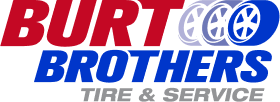You just spent hundreds of dollars on new tires. You chose quality tires. You prioritized safety and durability. Now you want to make the most of your investment.
The tire shop might have thrown around some terms – alignment, balance, rotation, pressure – but if these terms are new or unfamiliar, they might be going in one ear and out the other. I’ve compiled a handy reminder of the basics of tire maintenance, along with basic definitions and some strategies for identifying problems before it’s too late.
Tire Alignment
- The most common indicator that tires need to be aligned is signs of wear on the inside or outside edge of the tire. The inside edge and outside edge of your tire should look comparable. A difference between the inside and outside wear would indicate that one area is getting an inordinate amount of wear.
- If your vehicle is pulling to one side or the other, this may indicate that you need your tires aligned, but it may also be the result of other problems such as low air pressure or malfunctioning brakes.
Tire Balance
- If your car starts shaking or vibrating at higher speeds, then your tires need balancing. Many companies throw in complimentary tire balancing when performing oil changes or tire rotations. (Note: if your tires wobble at take-off or at lower speeds, this is a completely different situation indicating a bad tire in need of immediate attention.)
- Balancing tires ensures that all areas of the wheel-tire unit are equal in weight so that the tire will roll smoothly. Balancing is accomplished by putting the wheel-tire assembly on a balancer in order to center the wheel and spin it at high speed, which helps determine where the tire weights should go. Small lead squares can be affixed to the tire to adjust the weight.
Tire Rotation
- Tires should be rotated every six months or 6,000 – 8,000 miles. Check your owners’ manual for your car’s recommended schedule. Many owners have their tires rotated every other time the oil is changed. Tire rotation is often offered at no cost from the tire shop that sold the tires in the first place. If you do pay for tire rotation, it won’t be especially expensive, costing an estimated $20-$30 dollars.
- Rotating your tires will extend the tires’ lifespan, improve gas mileage, and improve performance during sudden turns and stops. Rotating the tires involves moving each tire to a new location on the vehicle frame.
Tire Pressure
- Check your tire pressure at a gas station using the air machine for filling tires, and then keep your tires filled to the pressure recommended for your specific tires. You can find the recommended tire pressure for newer cars on a sticker inside the driver’s door. For older vehicles, you may need to check the owner’s manual.
- Driving on tires with either too low or too high of pressure will impair your car’s performance and safety. Tires at the wrong pressure don’t brake as quickly as they should and lack traction. In addition, tires with low pressure increase your car’s gas mileage by up to 20%.
[table id=2 /]
Tire Load
One final tip for taking good care of your tires involves keeping an eye on your tire load. Each tire has a specific load index, which means that the tires have been designed to withstand a certain amount of weight. You can learn the weight index by reading your owner’s manual or calling your local tire shop.
Even if you don’t know the specific numbers of your car’s tire load, be aware that your non-commercial vehicle has not been designed to carry commercial-sized weights. If you are loading up on bags of cement for a DIY home project, consider taking two trips to the home maintenance store. If you are helping someone move or going on a long trip, think twice before loading up both the inside and the top of your car with heavy goods and furniture.





